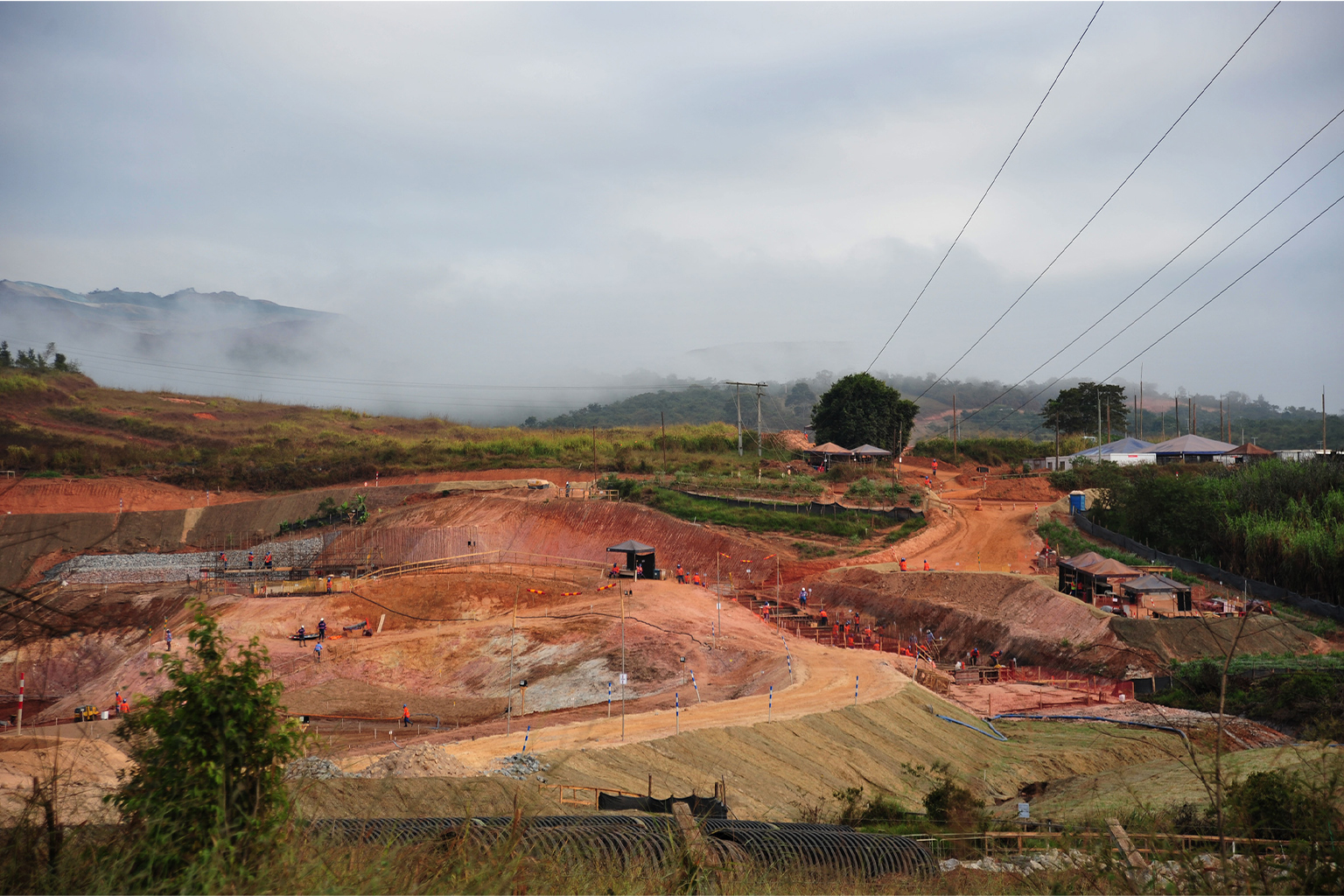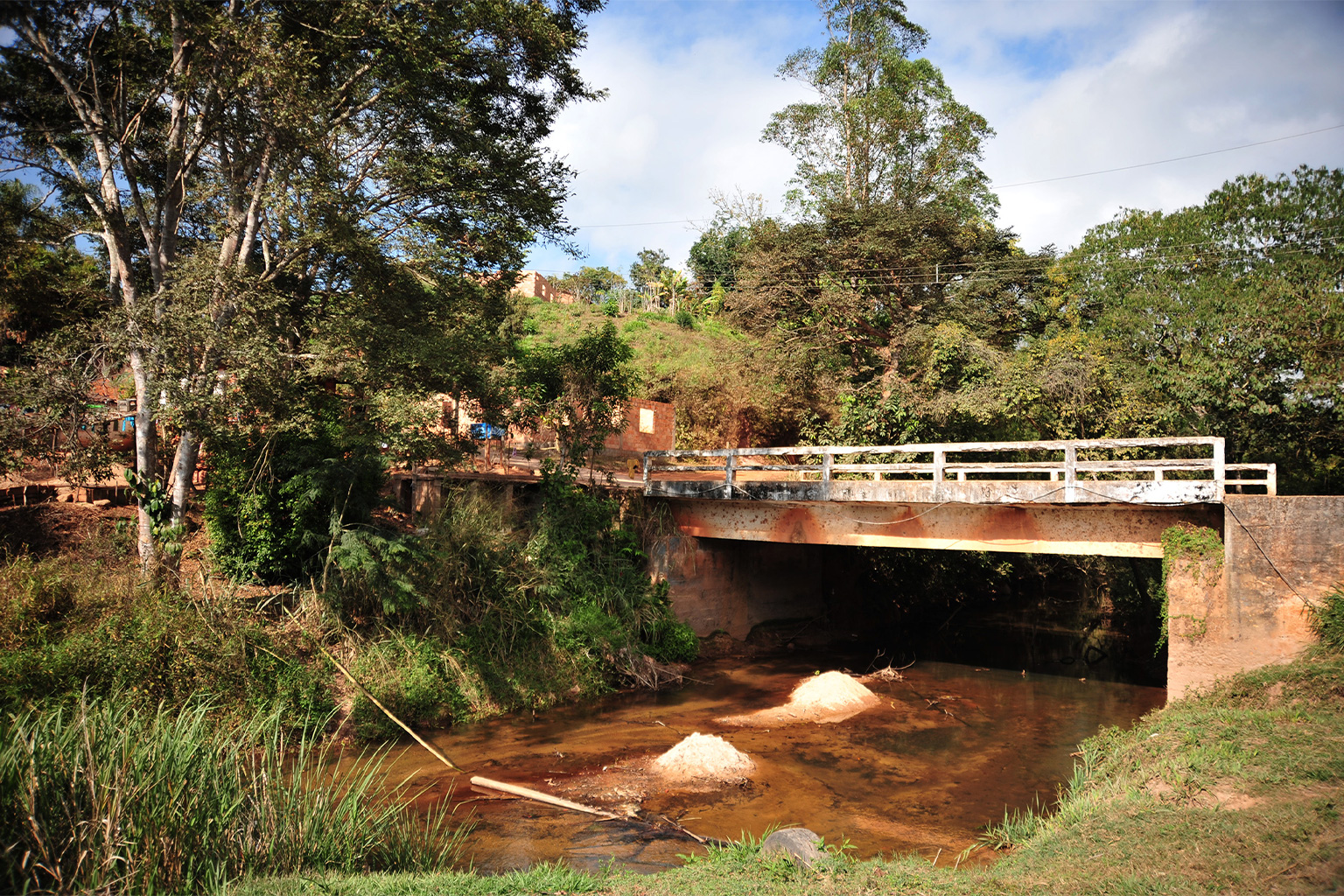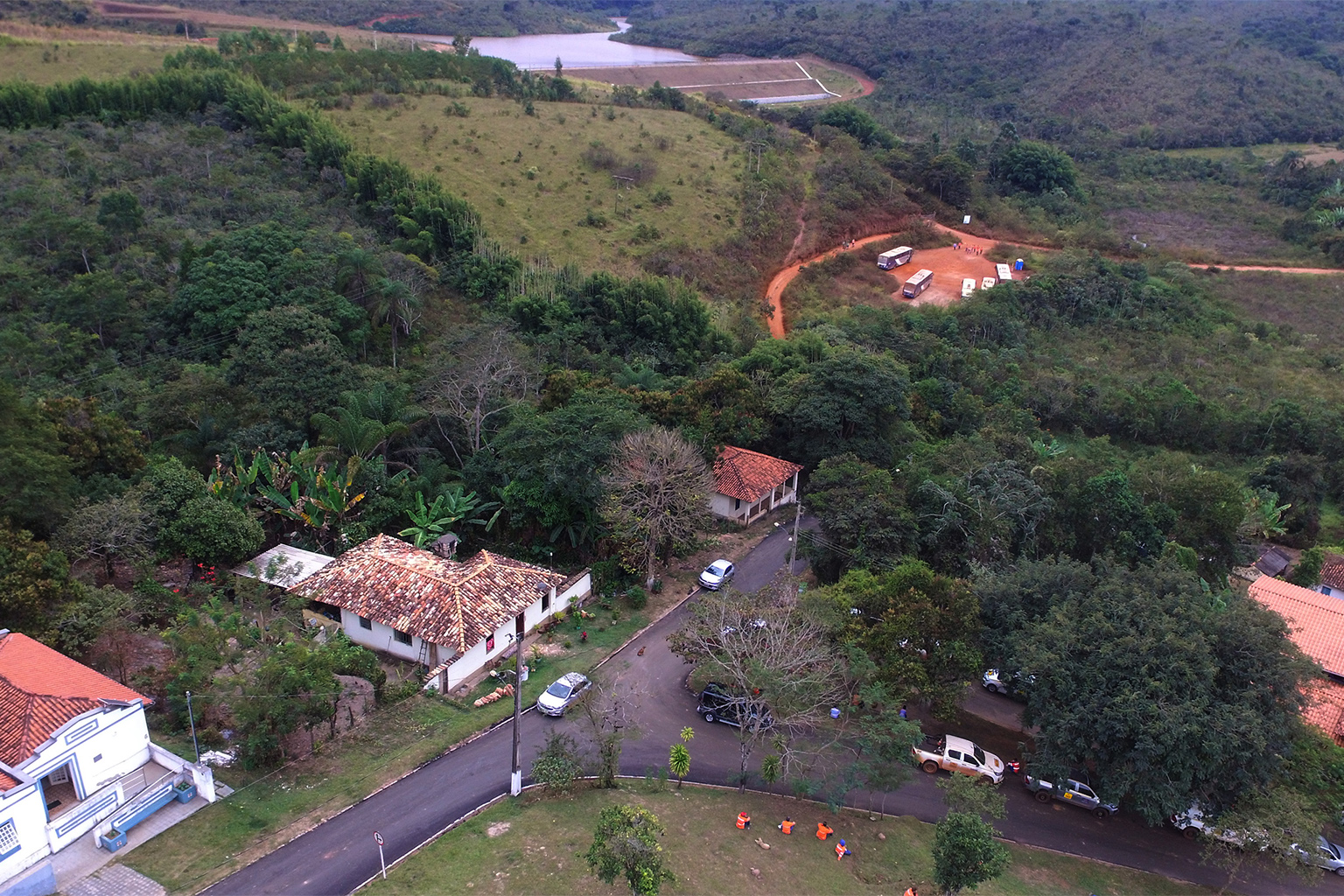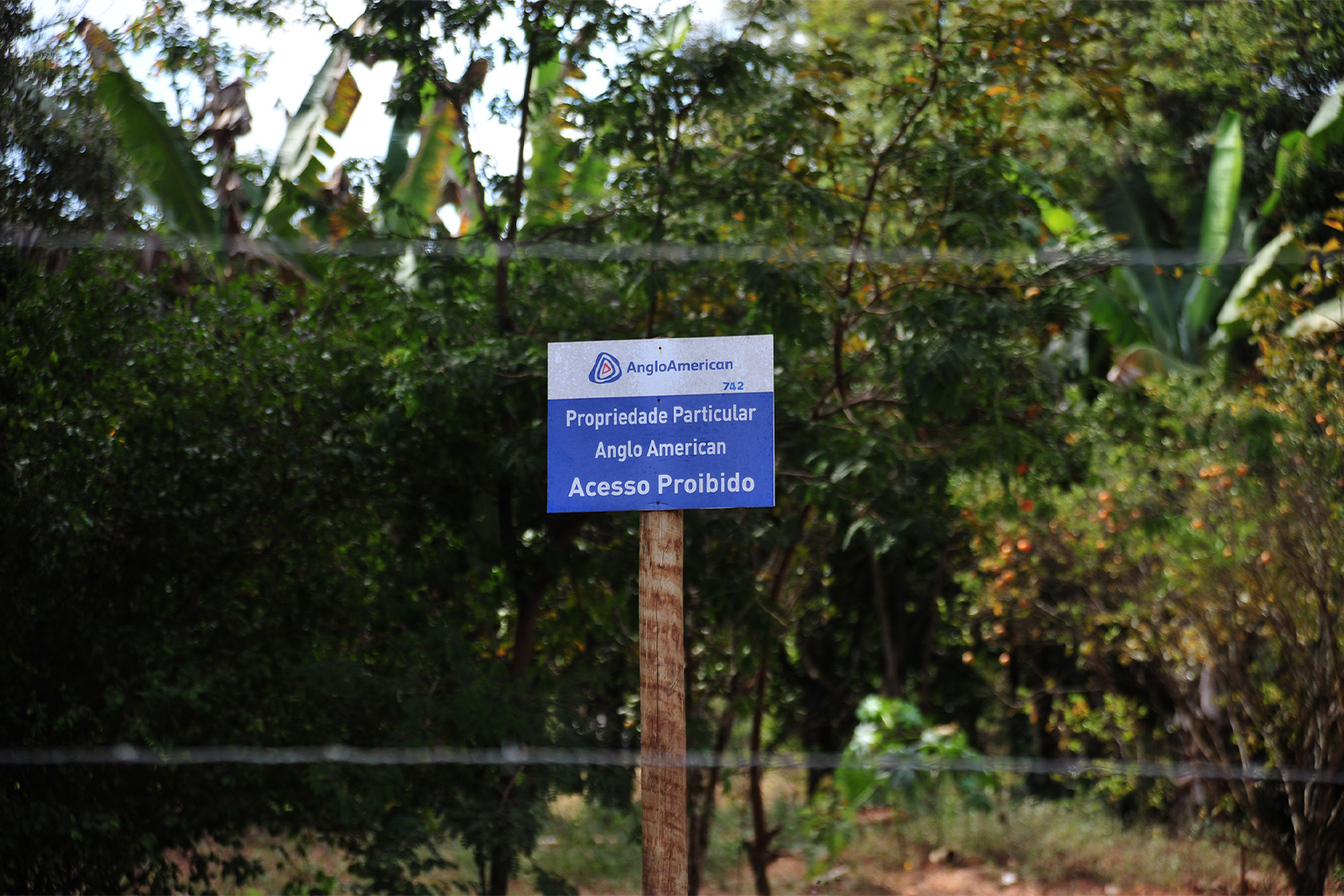‘Unequal exchange’ for Brazil community in shadow of Anglo American mine
Oct 22, 2021
- Mining giant Anglo American makes huge profits from its Minas-Rio iron ore mine in Brazil, but leaves little behind for the local communities whose lives have been upended by its operations, a new report says.
- Transparency of the mine’s financial flows falls short of international best practices, while its use of local water resources has reportedly led to shortages for the community, according to the report by the Brazilian Institute for Social and Economic Analysis (IBASE) and Publish What You Pay.
- The 529-kilometer (328-mile) pipeline that Anglo American uses to transport its processed ore to port ruptured twice in 2018, spilling almost 1,000 metric tons of iron ore into surrounding rivers, contaminating farmland, pastures and water sources.
- The local mayor where the mine is located says the municipality would go broke without the mine and that Anglo American has made an active effort to support sustainable development, although residents fearful of a breach of the mine’s tailings dam disagree.
U.K.-based mining giant Anglo American is making huge profits exporting iron ore from Brazil to China, but is leaving little behind for local communities whose lives are now gripped by uncertainty and fear, a new report says.
The Minas-Rio mining project extracts and processes iron ore in the municipalities of Conceição do Mato Dentro and Alvorada de Minas in Brazil’s southeastern Minas Gerais state. It then transports the powdered ore through a 529-kilometer (328-mile) pipeline to Açu Port in Rio de Janeiro, from where it’s shipped to China. Considered the world’s longest mineral duct, its reported use of the region’s natural water resources is blamed by local communities for shortages and pollution.
The pipeline ruptured twice in 2018, spilling almost 1,000 metric tons of iron ore. These incidents are symptomatic of a lack of transparency in how the miner does business, which is odds with industry best practices, and offers few tangible benefits to the most impacted rural communities, according to a joint report by the Brazilian Institute for Social and Economic Analysis (IBASE) and Publish What You Pay, a global transparency coalition focused on the extractive sector.
Mine-related dust and noise from the Minas-Rio mining project have replaced the calm routine of rural life, and the region’s rivers and streams are now either silted or polluted, affecting several communities’ drinking water supply as well as their farming activities. And the underlying lack of transparency in the country’s mining sector aggravates the impacts, the report says.

“Information was very difficult to find, and what we were able to find revealed a huge issue with Brazil’s natural resource governance,” Athayde Motta, executive director of IBASE and co-author of the report, “In Search of Transparency: Ending Opacity in Brazil’s Extractive Sector,” told Mongabay by phone. “Since we started research for this report, that governance has been torn apart even further.”
Since Jair Bolsonaro took office as president at the start of 2019, Brazil has seen the passage of 57 bills that weaken environmental protections, including legislation allowing mining permits to be issued before environmental reviews are completed, according to a March 2021 study published in Biological Conservation. Anglo American has more than 300 applications pending to prospect or mine on Indigenous lands in the Brazilian Amazon — a practice that is illegal under the country’s Constitution, but may soon be allowed if another controversial bill is approved.
In 2018, the U.N. warned Brazil about threats to six working-class families in Conceição do Mato Dentro after they filed a lawsuit against the operations of Anglo American Iron Ore Brazil S.A, the miner’s local subsidiary. Later, they entered a state-run protection program for human rights defenders.
The report recommended that the Brazilian government join the 55 countries already affiliated with the Extractive Industries Transparency Initiative, which aims to set a new global gold standard for mining and oil governance.
In a statement, Anglo American said that it “strictly complies with the applicable legislation and has its activities licensed and monitored by the competent authorities” and that it “already follows the best international standards and guidelines.” In Brazil, the company added, it “operates with total regularity in the host cities, acting with actions of prevention, mitigation, control and monitoring of social and environmental impacts.” The Brazilian government and the Ministry of Mines and Energy did not respond to Mongabay’s request for comment.
“These multinational companies all claim to operate respecting country laws, and they do. But local laws are often inferior to international best practices and that seems to be the case in Brazil,” Miles Litvinoff, another co-author of the report and former director of Publish What You Pay U.K., told Mongabay by phone. “A positive payoff is very difficult, if not impossible, without transparency and accountability.”

Explosions, foul smells, polluted water and fear
Alice spent her childhood playing at a waterfall near her home. The waterfall is gone now, and in its place stands the giant dam that holds back Anglo American’s mining waste.
Alice, who asked that her real name not be used for fear of persecution, said her community is gripped by disaster anxiety. They’ve watched as two other large tailings dams have collapsed in the last six years in Minas Gerais state, considered the worst environmental disasters in Brazil’s history.
They live within what first responders call the self-rescue zone: if Anglo American’s tailings dam were to break, the wave of toxic sludge would reach them before emergency teams could arrive. “Everyone here lives in constant fear, with or without rain,” Alice told Mongabay by phone. “On rainy nights, that fear grows.”
Anglo American has offered to pay for the relocation of anyone living within this zone, and says that 80% of families have voluntarily opted in. But Alice says the terms aren’t good enough. “We subsist from family agriculture. If we leave today, will we have food to eat when our money runs out?” she asked. “Maybe it brought some benefits for people in the cities, but I haven’t seen any positive points. Our number one priority is to leave, but with our rights fully guaranteed.”
Today, she said, her family’s rural life is plagued by sudden explosions and a foul smell from the mine less than 1.5 km (nearly a mile) from her home. Without fresh water available, she said, her family now depends on Anglo American’s water trucks for drinking water, while their farm animals drink contaminated water from the river. “Life was better before,” she added.
Concerns had been raised by local communities about the impacts on their livelihoods from the get-go before the mine was fully licensed, but they were brushed off by local authorities, according to the report. “[R]ural communities’ anxieties … were discounted during the licensing stages as expressions only of “perception” and “alleged” or “supposed” impacts rather than as objectively real consequences of the mine and its infrastructure,” the report says.

Profits and economic growth versus rural communities suffering
While Anglo American’s mining operation makes billions of dollars, a small fraction of its output stays in Brazil. According to the company’s third-quarter results, published Oct. 21, the company exported close to $1 billion worth of iron ore in three months just from its Minas-Rio operation. With royalties pegged at 3.5%, only $34 million is paid to the municipalities in which it operates, with local activists saying no tangible benefits reach those most impacted by the mine.
Anglo American’s current production cost is $21 per metric ton of iron ore, and the commodity currently sells for $167 per metric ton, according to the company’s most recent production statements. Another $5 per metric ton is divided between “market development & strategic projects, exploration & evaluation costs, restoration & rehabilitation costs and other corporate costs,” according to Anglo American’s 2020 Global Summary.
There is no indication of any illegal activity, but the report authors question why Brazil has made such a poor deal on its natural resources, which are finite. “Companies should make a reasonable profit off of extracting, and that’s it,” Litvinoff said. “Beyond a reasonable profit, everything else should be in the public domain and used for the public good.”

For José Fernando de Oliveira, the mayor of Conceição do Mato Dentro and a self-proclaimed environmentalist, the mining project will pay off in the long run. He said the company has made an active effort to offset negative impacts, which he describes as inevitable. Without Anglo American, he told Mongabay, the city would be broke, adding that more than 70% of the municipality’s revenue now comes from mining royalties.
“We’re going through a period of economic growth, and our mission is to turn that growth into development and quality of life,” Oliveira said by phone, adding that the mine supports investments in ecotourism and infrastructure. “There is a huge concern on the company’s side to mitigate the negative impacts and invest in positive ones, such as financing economic diversification. Mining doesn’t have a second harvest, it’s a finite resource, so sustainability is our goal.”
But for civil society and rural community members, the reality is different. “Anglo American talks a very good talk about all their various initiatives, but if their practices are so good, then why are there people under witness protection programs who opposed the mine? Why do we get evidence that communities are divided and unable to pursue their traditional livelihoods, and fearful of dam breaches?” Litvinoff said. “It’s a totally unequal exchange.”
Banner image: Anglo American’s Minas-Rio mining project has upended the once calm routine of rural life in the municipality of Conceição do Mato Dentro, in Brazil’s southeastern Minas Gerais state. This image shows the jubilee party of Bom Jesus do Matosinhos in Conceição do Mato Dentro. Image courtesy of Alexandre Guzanshe/IBASE.
FEEDBACK: Use this form to send a message to the author of this post. If you want to post a public comment, you can do that at the bottom of the page.